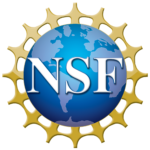RESPONSIBLE MINING, RESILIENT COMMUNITIES
We are an interdisciplinary, multi-institution, and global research collaboration funded by the US National Science Foundation. We co-design socially responsible and sustainable mining practices with communities, engineers, and social scientists.
What is ASGM?
Artisanal and small-scale gold mining (ASGM) takes place primarily in the developing world in both the formal and informal sectors. It is generally characterized by relatively simple technologies and lower yields as compared to large-scale industrial mining. Approximately 30% of the gold used worldwide comes from ASGM. This gold is used in jewelry, finances, electronics, aerospace, and medicine.
This style of mining has become a matter of global concern because of its environmental and health impacts. Artisanal mining is a leading cause of deforestation in places such as the Amazon. To process the ore, miners often use mercury – an element that is highly toxic. Using mercury is harmful to the environment, because it contaminates the air, water, and soil, and causes deforestation. Mercury is also harmful to humans and causes chronic diseases.
ASGM is an important way of life for millions of people around the world. Efforts to change this practice by using mercury-free alternatives have not been widely adopted in part because they have not been designed with miners’ concerns and needs in mind. Our project improved this effort by working together with miners and affected communities in Colombia and Peru by jointly designing, implementing, and evaluating ASGM technologies and practices. In this way, the people most directly impacted have a voice in deciding which alternative methods for mining and mineral processing are most fitting.

This project was funded by the National Science Foundation Partnerships for International Research and Education (PIRE) through award #1743749.